Located in the heart of Northern Vietnam, Phu Tho has long been known as the “Land of Hung King”, a place that preserves the sacred historical and cultural values of the nation. However, from July 1, 2025, the tourism picture here has changed when Phu Tho expanded its boundaries, merging Hoa Binh and Vinh Phuc.
This event turned Phu Tho into a rare convergence destination that combine thousands of years, old screed relics, majestic mountains and forests, peaceful lakes and cool resort towns all year round. Whether you are looking for a pilgrimage to the source, a journey to explore nature, or simply a relaxing vacation amidst peaceful scenery, Phu Tho will bring you a complete, diverse and unforgettable experience.
Overview of Phu Tho Province
Phu Tho, known as the “Land of the Hung King”, has long been an important cultural and spiritual meeting point of Vietnam. From July 1, 2025, a new landmark has been formed: Phu Tho province was expanded through the merger of the entire administrative boundaries of Hoa Binh and Vinh Phuc. This event not only helped Phu Tho become one of the largest provinces in the North in terms of area and population but also turned it into a “miniature map” of tourism in the midlands, mountainous areas and the Red River Delta.
Now, visitors to Phu Tho can experience a multi-faceted journey, from sacred historical sites such as Hung Temple and Hung Lo ancient village to the majestic mountain scenery of Hoa Binh, blue lakes such as Hoa Binh Lake, or famous resorts and craft villages in Vinh Phuc. The diversity of landscape, culture and cuisine has created a new Phu Tho, both imbued with its original identity and opening up endless space for exploration for domestic and foreign tourists.
Best Time to Visit Phu Tho
Phu Tho, located between the Red River Delta and the Northwest Mountains, has a humid subtropical climate with four distinct seasons. On average, the year-round temperature is around 23-24°C, cooler than many destinations in Northern Vietnam.
- Spring (February – April): This is the ideal time if you want to immerse yourself in the festival atmosphere and feel the original culture .The weather is cool at this time, only about 18-23°C, with a little light spring rain creating a hazy scene. This is also the occasion of the Hung King’s Commemoration Day in the third lunar month – the biggest festival in the country.
- Summer (May – August) in Phu Tho is hot and humid, with temperatures around 27-32°C, and is the rainiest season (average 250-300 mm/month). However, this is a great time to escape the heat at Hoa Binh Lake, Dai Lai Lake or trek in the cool mist of Xuan Son National Park.
- Autumn (September – November) is the most beautiful time for those who love nature. Temperatures range from 20 to 26°C, with clear skies and rainfall of 80-120 mm/month. Long Coc Tea Hills are currently covered in a wet blue, foggy early plateau, ideal for photography.
- Winter (December – January) brings mild air, 14-18°C, dry, and sometimes foggy early in the morning. This is a great season to enjoy the hot cuisine and enjoy the tranquillity of the central tourism.
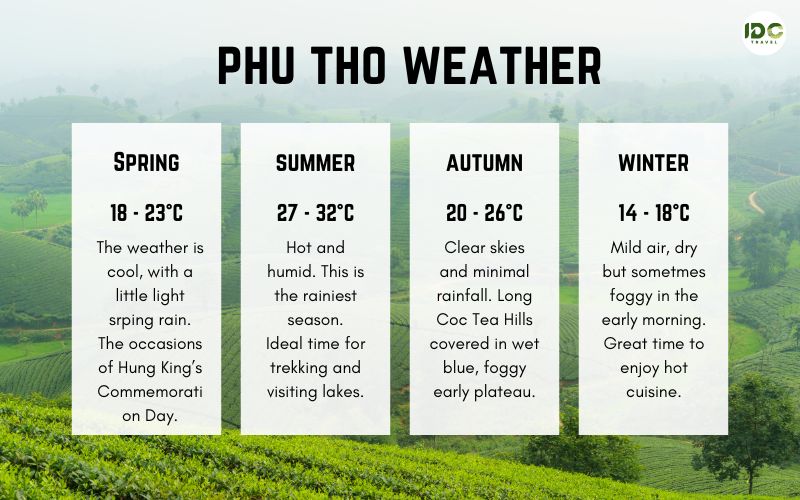
Phu Tho weather
After the merger (from 1/7/2025), the “New Phu Tho” offers more options for visitors: you can explore the majestic mountain scenery in the Pacific in the summer, resort by the lake or visit the traditional craft villages of Vinh Phuc in the winter. No matter what time you arrive, there is always something interesting to welcome you.
Getting to Phu Tho
Due to the central location in Northern Vietnam, Phu Tho is easily accessible from Hanoi and neighnoring cities. After the merger, the “new Phu Tho” includes Hoa Binh and Vinh Phuc, so you have more entry points to the province, depending on your itinerary.
By road from Hanoi
It only tales about 1.5 to 2 hours by car to reach Viet Tri City, the administrative center of Phu Tho, via Noi Bai – Lao Cai expressway or national highway 32C. Connecting routes are also very convenient if you come from Ninh Binh, Lao Cai or Sapa.
Private cars, long-distance taxis, or car rental services with drivers are all comfortable options for small groups and families.
By Train
The Hanoi – Lao Cai railway line has many stops at Viet Tri station and Phu Tho station. Travel time from Hanoi is about 2-2.5 hours, with ticket costs about 80,000 – 150,000 VND depending on seat class. This is a suitable choice for tourists who want to see the Vietnamese countryside through the window.
By Bus
From My Dinh or Giap Bat bus station in Hanoi, there are many buses to Phu Tho, with ticket prices ranging from 60,000 to 100,000 VND and a travel time of about 1.5-3 hours. International visitors often prefer sleeper buses or limousines for their comfort and convenience.
From Noi Bai International Airport
If you fly to Hanoi, Noi Bai International Airport is only about 60 km from Viet Tri. You can take a taxi, rent a private car, or use a limousine service to go straight to your hotel. Thanks to the developed transportation network, you can combine your trip to Phu Tho with other destinations such as Hanoi, Hoa Binh, Vinh Phuc or Sapa in the same journey.
If you are travelling in Vietnam and looking for a reliable transfer, please reach out to our car rental service. With a professional driver, we are confident to ensure a safe and smooth transfer and a memorable time in Vietnam!
Best Place to Visit in Phu Tho
After the provincial merger in July 2025, Phu Tho is not only the “Hung King’s homeland” but also a destination that covers all types of Northern tourism, from mountains and lakes to primaeval forests, historical sites and traditional craft villages. Each destination has its own story, promising to make your trip memorable.
Hung Kings Temple Complex
If you want to touch the roots of Vietnamese culture, you can’t miss the Hung Kings Complex on Nghia Linh Mountain. The rocky road leading to the main temple is covered with ancient trees, bringing a sacred and quiet space. On the occasion of Hung Kings’ Commemoration Day (March 10th of the lunar calendar), millions of people from all over the world flocked to commemorate the Hung Kings, creating a festive atmosphere with flags, drums and folk games. Even outside the festival season, the relic site is still attractive with its ancient architecture and panoramic view of Viet Tri City.
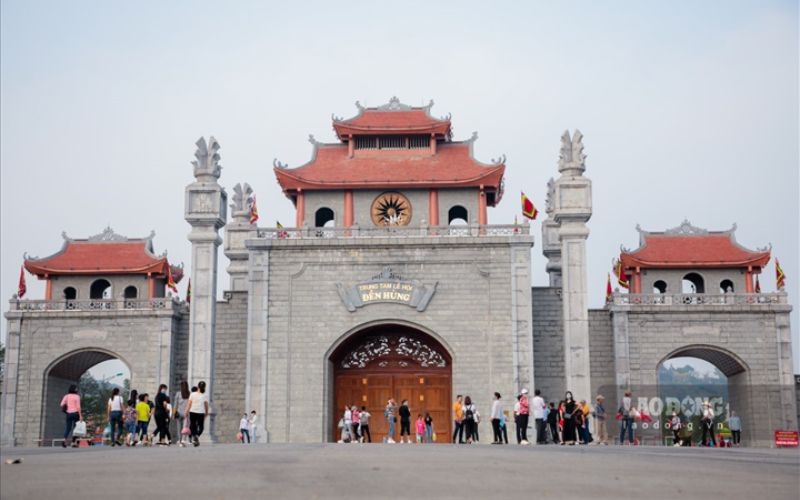
Hung Kings Temple Complex
Hung Lo Ancient Village
Only about 5 km from the center of Viet Tri, Hung Lo is a typical Northern village with hundreds of years old limwood roofs, red brick yards and small alleys shaded by bamboo. The village is famous for making banh chung and banh giay, dishes associated with the legend of Hung King. Visiting Hung Lo village, you can try wrapping banh chung yourself, listen to the elders tell village stories, or simply take a slow walk to feel the peaceful pace of life.

Hung Lo Ancient Village
Long Coc Tea Hills
Located in Tan Son district, Long Coc is known as “Ha Long Bay in the mountains” with hundreds of round tea hills like green oases. The most beautiful moment is in the early morning, when the thin fog wraps around the tea hills and the golden sunlight begins to shine down. This is the perfect destination for photographers and those who want to find a quiet space to relax.
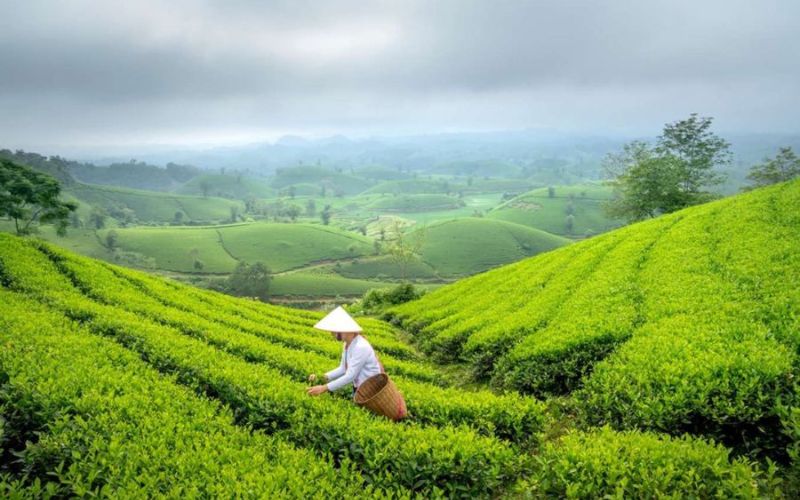
Long Coc Tea Hills
Xuan Son National Park
Xuan Son National Park is a wild natural treasure with limestone mountains, caves, cool streams and villages of the Muong, Dao, H’mong people. You can trek through the tree-lined trails, swim in the clear water of the streams, or camp overnight under the starry sky. The taste of grilled stream fish and bamboo rice here will definitely be one of the unforgettable culinary memories.
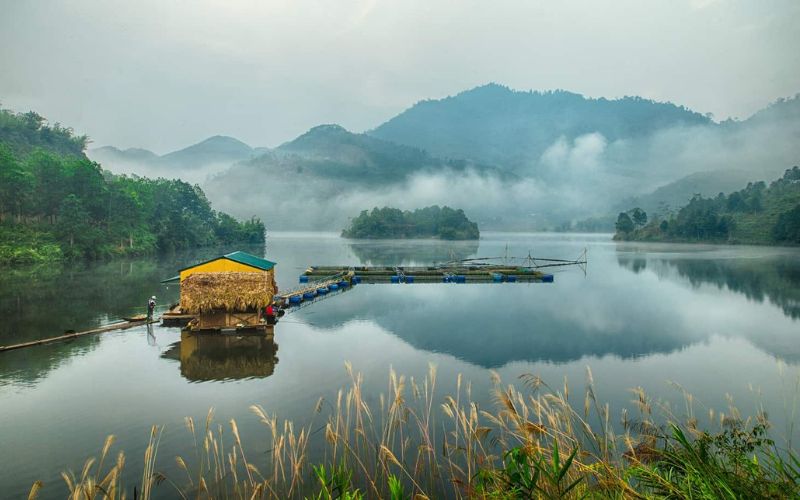
Xuan Son National Park
Hoa Binh Lake (Hoa Binh area – now in Phu Tho)
Hoa Binh Lake is the largest artificial lake in Vietnam, stretching between green mountains and lakeside villages of the Muong people. A boat trip on the lake will take you past small islands, hidden caves, and fishing village wharves. At night, you can stay at a homestay by the lake, enjoy rice wine, and listen to folk songs around the fire.
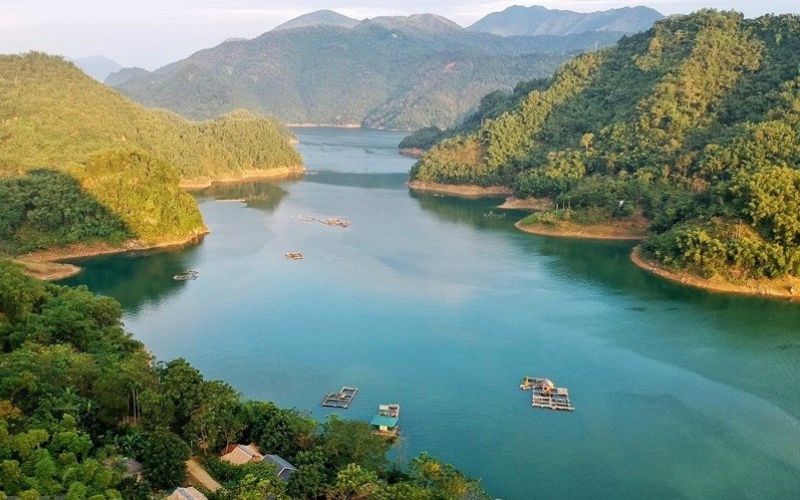
Hoa Binh Lake
Tay Thien Pagoda & Tam Dao
Tay Thien Pagoda is one of the main Buddhist centres in the north, which is located in the dense forest. The path to the temple will take you through waterfalls, cool springs and virgin forest, creating a spiritual and relaxing journey.
Not far away, Tam Dao town is renowned for its cool climate throughout the year. You can enjoy the romantic smog landscape and cloud cafe, an ideal place for holidays and photos.
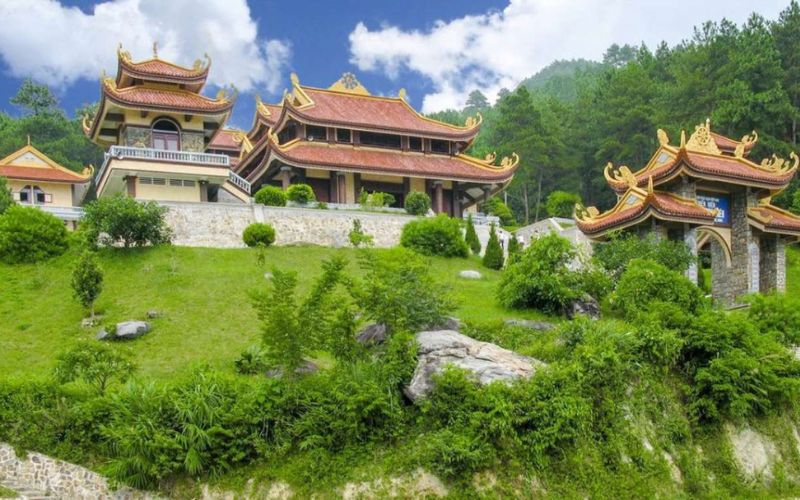
Tay Thien Pagoda & Tam Dao
Traditional Craft Villages
Phu Tho has many characteristic craft villages, such as Huong Canh ceramics with a unique unfermented baking technique, orchid weaving in Mai Chau with bright patterns, or the empty skin village in the sea. Each village gives you the opportunity to meet artisans, learn the secrets of traditional craftsmanship, and bring exquisite handcrafted gifts.
With a combination of natural landscape, cultural heritage and community experience, Phu Tho is the perfect destination for those who want to explore multidimensional Vietnam, both deep in sacred places, full of vitality in festivals and full of vitality in primitive nature.
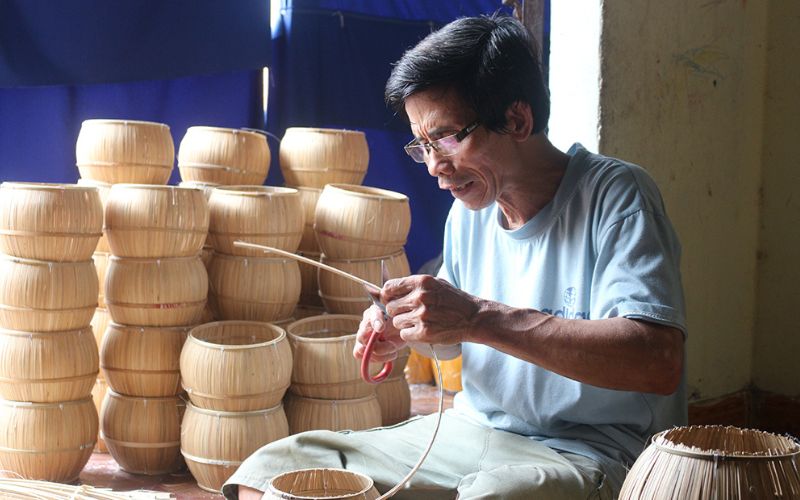
Traditional Craft Villages
Traditional Festivals in Phu Tho
Phu Tho is not only the birthplace of the Vietnamese people but also a palace to preserve the treasure house of characteristic traditional festivals. After the merger in July 2025, this province has a rich picture of festivals, extending from national festivals to warm rural community activities.
Hung Kings Temple Festival
Held on March 10th of the calendar annually, it is the biggest festival in Vietnam. During the festival, millions of Vietnamese people make a pilgrimage to Nghia Linh mountain to commemorate the merits of the Hung Kings.
Visitors expect flags hanging over the streets, the sound of bronze drums, and solemn sacrificial ritals mixed with folk games such as tug of war, swinging, and xoan singing. For international visitors, this is a rare opportunity to immerse themselves in an event that is national symbol and has been recognised by UNESCO as an intangible cultural heritage.
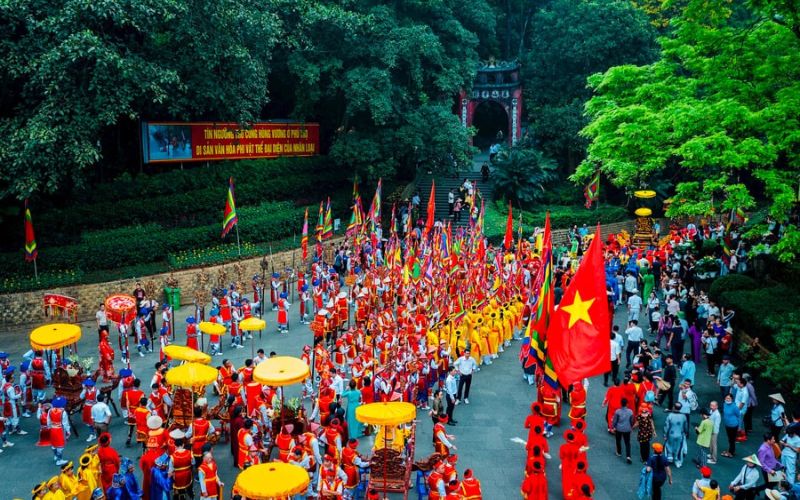
Hung Kings Temple Festival
Xoan Singing
Xoan singing is a type of ritual folk song associated with the worship of Hung Kings, recognised by UNESCO as an intangible cultural heritage of humanity. In the spring, many Xoan troupes in Phu Tho organise singing at the village communal house, opening their doors to welcome visitors to join in the singing and dancing, interact with the artists, and learn the meaning of each ancient melody. This experience is both artistic and takes you back in time to explore the spiritual life of Vietnamese people hundreds of years ago.
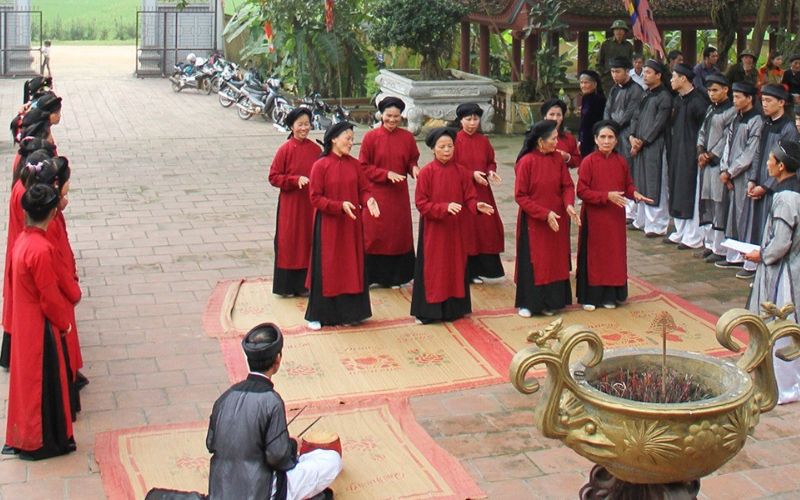
Xoan Singing
Mai Chau Festival in Hoa Binh (now belonging to Phu Tho)
Mai Chau – the land of Thai people – is famous for its busy festivals, such as the Xen Muong festival or the Com Moi festival. These days, the village are filled with the sounds of panpipes, drums, the aroma of sticky rice, rice wine, and group xeo dances that visitors can take part in.
No matter what season you visit Phu Tho, you can always find a traditional festival taking place somewhere, from the village communal house along the Da River to the villages hidden among the tea hills. With the combination of Kinh, Muong, Dao, Thai cultures, the festivals here is not only an occasion for fun but also journeys to discover the soul and identity of Vietnam.
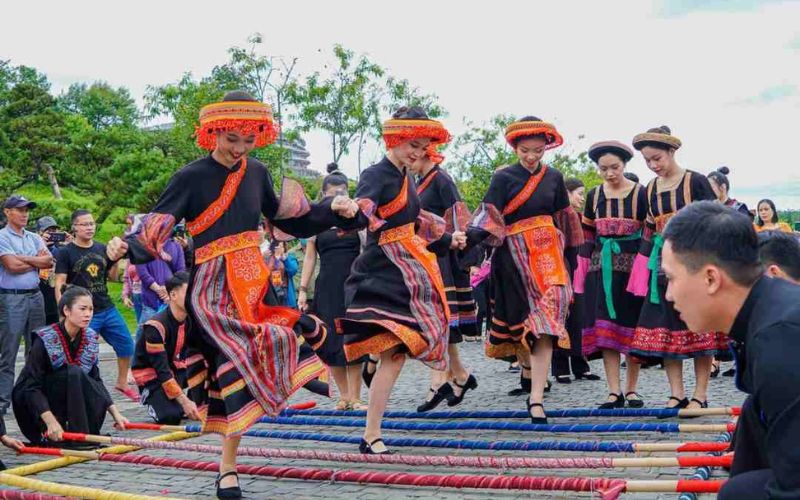
Mai Chau Festival
>>> If you love to experience authentic lifestyle of ethnic minority peoples in Mai Chau, please visit our Mai Chau Break 2 Days for leisurely cycling and contacting with locals in this beautiful mountainous area.
What to Eat in Phu Tho
Banh Tai – Phu Tho Specialty
Banh Tai is a rustic but meaningful dish of the Phu Tho people, often appearing on traditional festivals like Tet. The shape of the cake resembles a pig’s ear, symbolising abundance and prosperity. The cake crust is made from finely ground rice flour, and the filling is minced pork marinated with fish sauce, pepper and dried onions and then steamed. When eaten, the soft, chewy taste of the flour blends with the sweet aroma of the filling, creating a light but rich feeling.
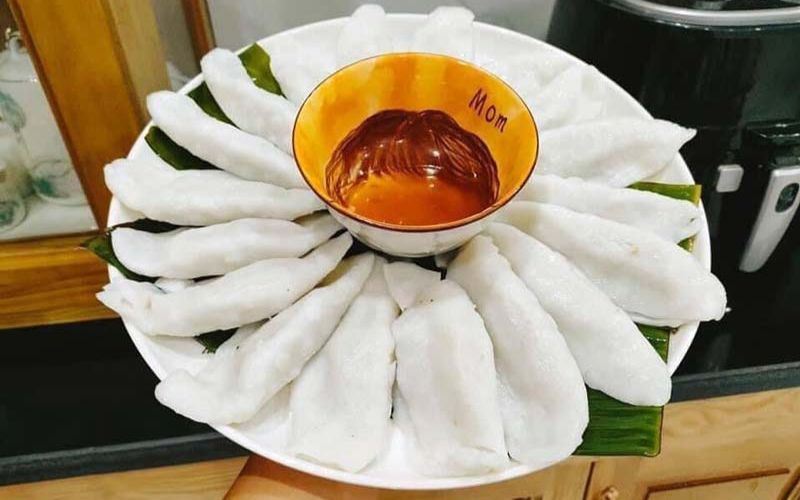
Banh Tai
Reu Da Nuong (Grilled moss) – Phu Tho
Rock moss grows in clear streams, only appealing in the clear water season. The Tay and Muong people consider it as “clean vegetables of the mountains and forests”.
After being washed on thoroughly kneaded to remove the fishy smell, the moss is marinated with lemongrass, mac khen, doi seeds, salt and then wrapped in banana leaves. Grilling over hot coals helps to preserve the sweetness and create a characteristic aroma. This dish is often served with bamboo rice or sticky rice.
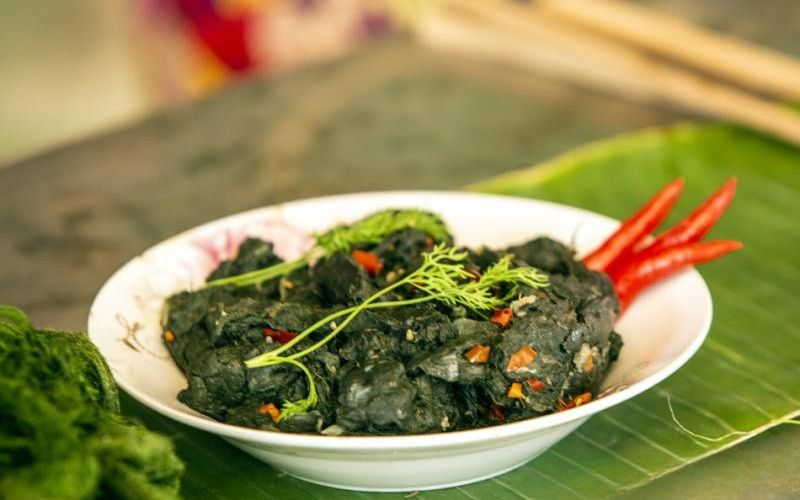
Reu Da Nuong
Thit Chua Thanh Son (Fermented pork) – Phu Tho
This is a traditional dish of the Muong people in Thanh Son, often used to entertain distinguished guests. Thinly sliced pork, mixed with roasted rice bran and spices, then wrapped tightly in banana leaves and left to ferment for 5-7 days. The meat is naturally fermented, has a mild sour taste, is fragrant and rich, and is eaten with fig leaves, perilla leaves, and chilli sauce, creating a very “appetising” flavour.
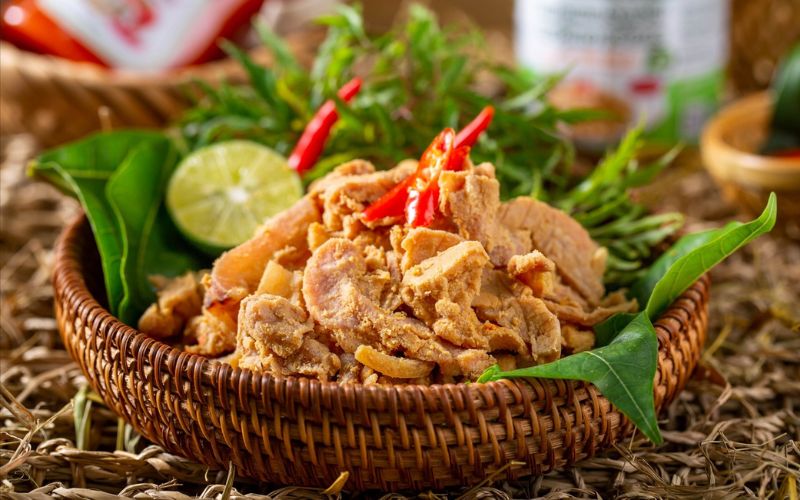
Thit Chua Thanh Son
Ca Suoi Nuong & Com Lam – Xuan Son National Park
The stream fish are small but firm, cleaned, marinated with spices and grilled directly on charcoal; the meat is sweet and fragrant. Bamboo rice is cooked in bamboo tubes, preserving the flavour of new sticky rice and the characteristic aroma of young bamboo. After a day of trekking in the Xuan Son forest, sitting by the fire and enjoying grilled stream fish with chilli salt and hot bamboo rice will be an unforgettable experience.
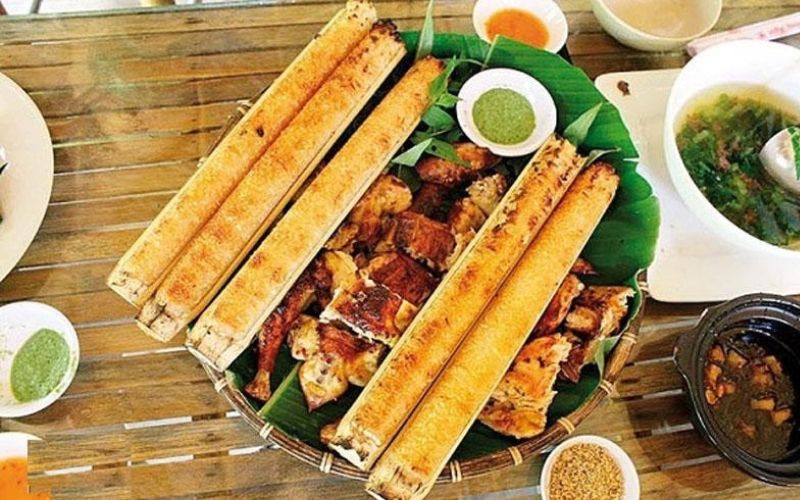
Ca Suoi Nuong & Com Lam
Xoi Ngu Sac & Ruou Can – Hoa Binh
The Thai people in Mai Chau have a secret to dyeing sticky rice with leaves and forest roots to create five colors: red, yellow, green, purple, white. Each color has its own meaning, from prosperity and happiness to longevity. Sticky rice is often eaten with ruou can, a type of wine fermented with leaves, drunk directly through bamboo tubes, very suitable for sharing in the festival atmosphere.
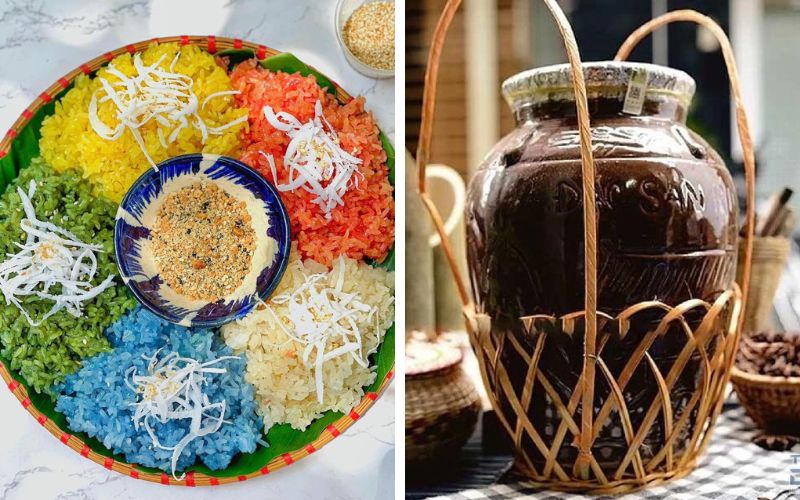
Xoi Ngu Sac & Ruou Can
Ca Lang Song Lo – Vinh Phuc & Phu Tho
Ca Lang, or Lang fish, is a type of fish that lives in the Lo River. It has white, firm meat and few small bones. The fish can be processed sour bamboo shoot hotpot, grilled with galangal or steamed with beer, each way retains its natural sweetness. A hot catfish hotpot on a cold winter day on the banks of the Lo River will bring a feeling of warmth and closeness.
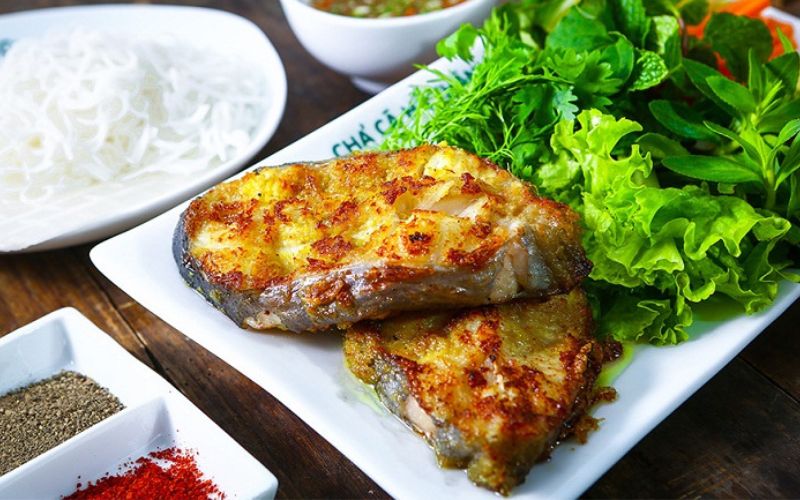
Ca Lang Song Lo
>>> Are you in love with the majestic mountains, rich culture and delicious cuisine of northern part of Vietnam? Then, you might love to experience a short break to this stunning region. Please reach out to our Best North Vietnam Tour for 2025/2026 and embark on an exciting trip to the mountainous area of Vietnam.
Where to Stay in Phu Tho
After expanding its boundaries from July 2025, Phu Tho offers numerous choices of accommodations. Visitors can stay at the administrative centre of Phu Tho or famous resorts such as Tam Dao, peace lake or Long Coc Tea Hills. Depending on the itinerary, you can choose to stay in a convenient urban area or enjoy the rustic space at the mountain homestay.
Viet Tri – Phu Tho Center
If you want to stay close to the spiritual attractions such as the Hung Temple and enjoy the convenience of the city, Viet Tri is the ideal choice. There are many 3-4 star hotels such as Sai Gon – Phu Tho Hotel, Muong Thanh Luxury Viet Tri, and other small boutique hotels that suitable for international travellers.
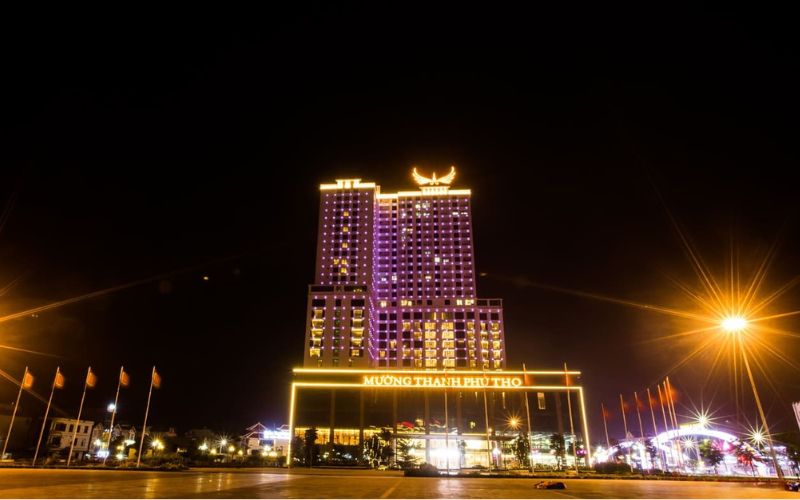
Muong Thanh Luxury Viet Tri
Xuan Son National Park & Long Coc tea Hills – Tan Son
For those who love nature and local experience, this area is a great option. Homestays such as Xuan Son Lakeview Homestay, Long Coc Homestay, or stilt houses of the Muong, Dao, H’Mong people all bring a feeling of closeness and warmth. Imagine waking up in the sounds of birds chirping, enjoy breakfast with sticky rice, bamboo rice, and hot tea from the hill tea next door, such a chilling experience, isn’t it?
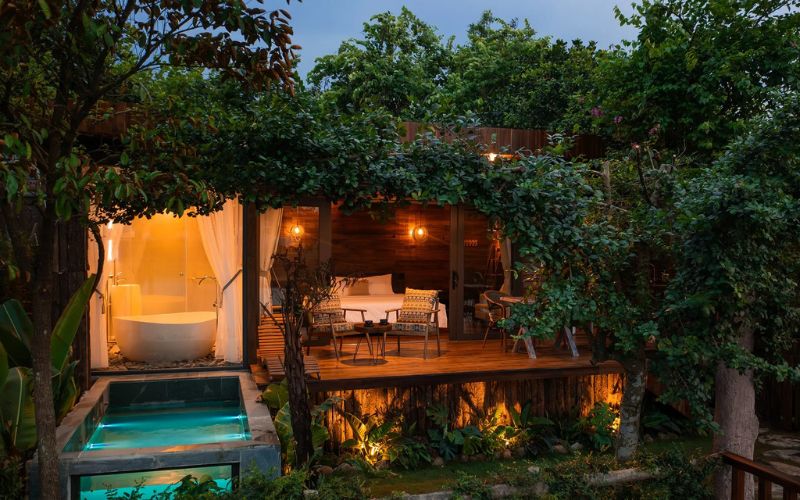
Xuan Son Lakeview Homestay
Tam Dao
Tam Dao is a high-end resort with a cool climate all year round. This is a favourable destination among international tourists. There are many beautiful resorts and hotels like Tam Dao Belvedere Resort and Venus Hotel & Spa, as well as private villas. The balconies of the resort often overlooks the cloudy sea or the wet green valley, ideal for relaxing.
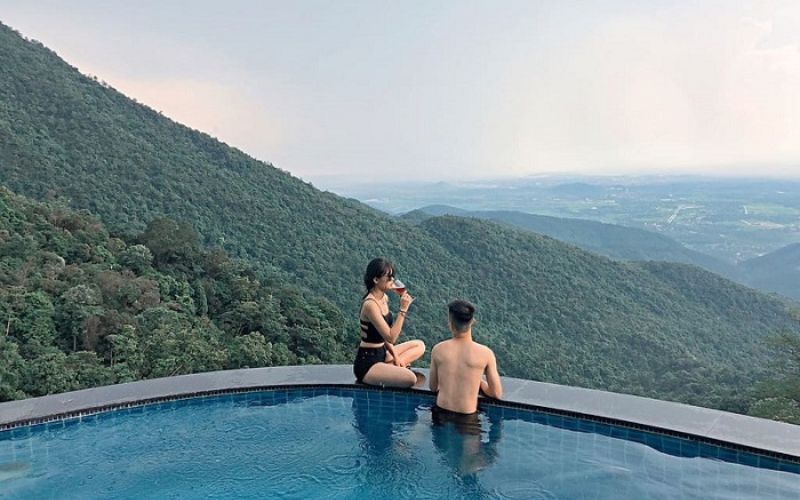
Tam Dao Belvedere Resort
Mai Chau & Hoa Binh Lake
This area is famous for its homestays on stilts by the lake and in Thai villages such as Mai Chau Ecolodge, Bakhan Village resort, or homestays along Hoa Binh Lake. This is a great choice if you want to combine relaxation and exploring local culture, from Thai xoe dancing to kayaking on the lake.
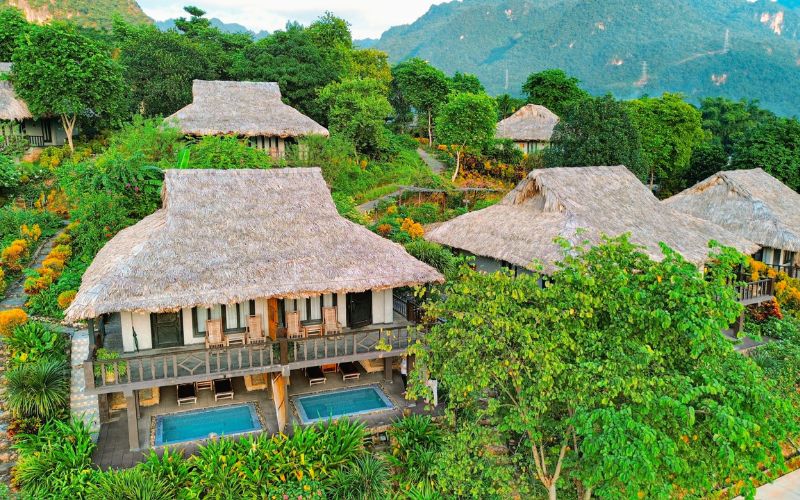
Mai Chau Ecolodge
In conclusion, Phu Tho has something for everyone. From ethnic homes with sacred relics to green lakes, poetic tea mountains and distinctive villages, Phu Tho has become a colorful tourist landscape in northern Vietnam. Whether you love spiritual journey, explore nature or experience local food culture, Phu Tho has special characteristics. Contact us to plan your unforgettable holiday to Phu Tho, and let this trip be a bridge between you and the millennium story of the country.